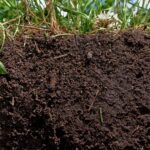Fusarium wilt is a fungal disease primarily caused by Fusarium oxysporum f. sp. melonis, which can devastate melon crops if not properly controlled. This article provides a detailed guide on how to prevent and treat Fusarium wilt in melons, covering management strategies, cultural practices, and effective treatments to protect your crop.

Introduction to Fusarium Wilt in Melon
Fusarium wilt manifests as vascular wilt that affects the quality and yield of melons. The fungus spreads through the soil and can remain viable for long periods, making eradication difficult. The key to combating this disease lies in prevention, early detection, and the implementation of integrated control measures.
Symptoms of Fusarium Wilt
Identifying Fusarium wilt early is essential to limit its spread. The main symptoms include:
- Progressive wilting of leaves, especially in young plants.
- Yellowing at the base of leaves that turns brown and dies.
- Brown discoloration in the stem’s vascular vessels when the plant is cut.
- Sudden death of the plant without visible signs of insect attack or adverse environmental conditions.

Prevention of Fusarium Wilt
Prevention is the most effective strategy for controlling Fusarium wilt. Below are several preventive practices:
1. Selection of Resistant Plant Material and Varieties
- Resistant varieties: Choose melon cultivars known for their resistance to Fusarium oxysporum. This reduces the likelihood of infection and limits the spread of the fungus.
- Certified seeds: Use pathogen-free seeds to ensure a healthy crop start.
2. Soil Management and Crop Rotation
- Soil analysis: Perform periodic soil analysis to identify nutrient levels and possible conditions conducive to the fungus.
- Crop rotation: Alternate melons with crops not susceptible to Fusarium for at least 3-4 years to reduce spore load in the soil.
- Solarization: Use soil solarization during warm periods to reduce Fusarium populations before planting.

3. Cultural Practices
- Improve drainage: Ensure the soil has good drainage to avoid wet conditions that favor fungal development.
- Disinfection of tools: Clean and disinfect tools and equipment to prevent the spread of the pathogen between plants and crop areas.
Treatment of Fusarium Wilt
When Fusarium wilt is detected, corrective measures must be implemented to contain the disease and protect the remaining plants.
1. Removal and Destruction of Infected Plants
- Immediate removal: Remove and destroy plants showing symptoms to prevent the fungus from spreading through the soil’s root system.
- Safe disposal: Do not compost infected plants; instead, burn them or dispose of them in a way that eliminates spores.

2. Application of Fungicides and Biocontrol Agents
Although fungicides have limited use against Fusarium once established, some specific products may help reduce the fungal load in the soil.
| Type of Treatment | Product / Strategy | Considerations |
|---|---|---|
| Soil fungicides | Products active against Fusarium | Preventive application in seedlings or transplanting |
| Biocontrol agents | Trichoderma spp. | Competes with soil pathogens; improves soil health |
| Soil amendments | Composting and organic matter | Improves soil structure and reduces Fusarium incidence |
3. Integrated Management and Ongoing Monitoring
- Constant monitoring: Regularly inspect the crop to detect early signs of Fusarium wilt.
- Integrated disease management (IDM): Combine cultural, biological, and chemical practices to create an environment less favorable for disease development.
Conclusion
Fusarium wilt in melons is a serious disease that requires a preventive approach and integrated management to be effectively controlled. By selecting resistant varieties, practicing appropriate crop rotation, maintaining good hygiene, and applying specific treatments when necessary, farmers can reduce the impact of Fusarium wilt and protect their investment. Prevention and early action are essential to maintaining a healthy and productive melon crop.
Bibliography
- Agrios, G.N. (2005). Plant Pathology. Elsevier Academic Press.
- Schilder, A.W., & Kennedy, D.L. (2000). “Managing Fungal Diseases in Melon Crops: Strategies and Research Findings.” HortTechnology, 10(4), 563-568.
- Nelson, P.E., et al. (1981). “Fusarium: Diseases, Biology, and Taxonomy.” University of Kentucky Press.
 AgronoBlog – Agriculture Blog
AgronoBlog – Agriculture Blog 

